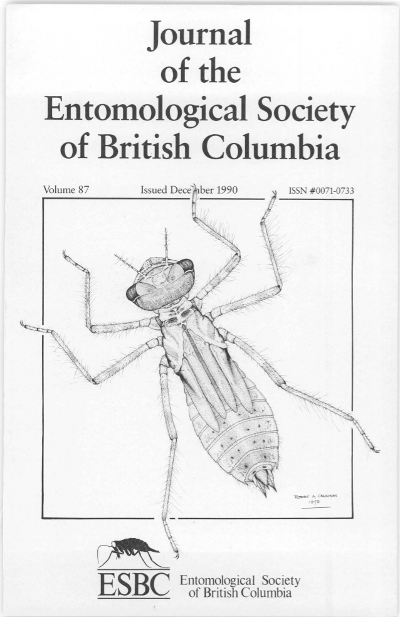Growth response in a Douglas-fir/lodgepole pine stand after thinning of lodgepole pine by the mountain pine beetle: A case study
Abstract
Diameter growth response was measured in a mixed stand of lodgepole pine, Pinus contorta Dougl. ex Loud, and interior Douglas-fir, Pseudotsuga menziesii var glauca (Beissn.) Franco, in the Cariboo Forest Region of British Columbia, 14 years after an outbreak of the mountain pine beetle, Dendroctonus ponderosae Hopkins, killed 76% of the pine. Nearly all Douglas-fir and a large proportion of the lodgepole pine responded to the beetle-induced thinning with a diameter growth increase which persisted 14 years after the infestation. Douglas-fir trees gained an average 1.4 em or 11.7% in diameter over the estimated size the trees would have reached in the absence of the thinning effect. Annual growth rates of Douglas-fir in the post-outbreak period averaged 2% per year without the beetle-induced thinning and 2.9% after thinning. The surviving lodgepole pine trees gained an average 1 em or 5.4% in diameter over the size the trees would have reached in the absence of the thinning effect. In the post-outbreak period, annual diameter growth rates of the pine doubled from 0.4% per year without the thinning , to 0.8% per year with thinning. The thinning response in Douglas-fir was inversely related to the initial diameter and age of the trees at the start of the infestation but that of pine was not.
Downloads
Issue
Section
License
Authors who publish with the Journal of the Entomological Society of British Columbia agree to the following terms:
-Authors retain copyright and grant the journal right of first publication with the work simultaneously licensed under a Creative Commons Attribution License that allows others to share the work with an acknowledgement of the work's authorship and initial publication in this journal.
-Authors are able to enter into separate, additional contractual arrangements for the non-exclusive distribution of the journal's published version of the work (e.g., post it to an institutional repository or publish it in a book), with an acknowledgement of its initial publication in this journal.
-Authors are permitted and encouraged to post their work online (e.g., in institutional repositories or on their website) prior to and during the submission process, as it can lead to productive exchanges, as well as earlier and greater citation of published work (See The Effect of Open Access).


